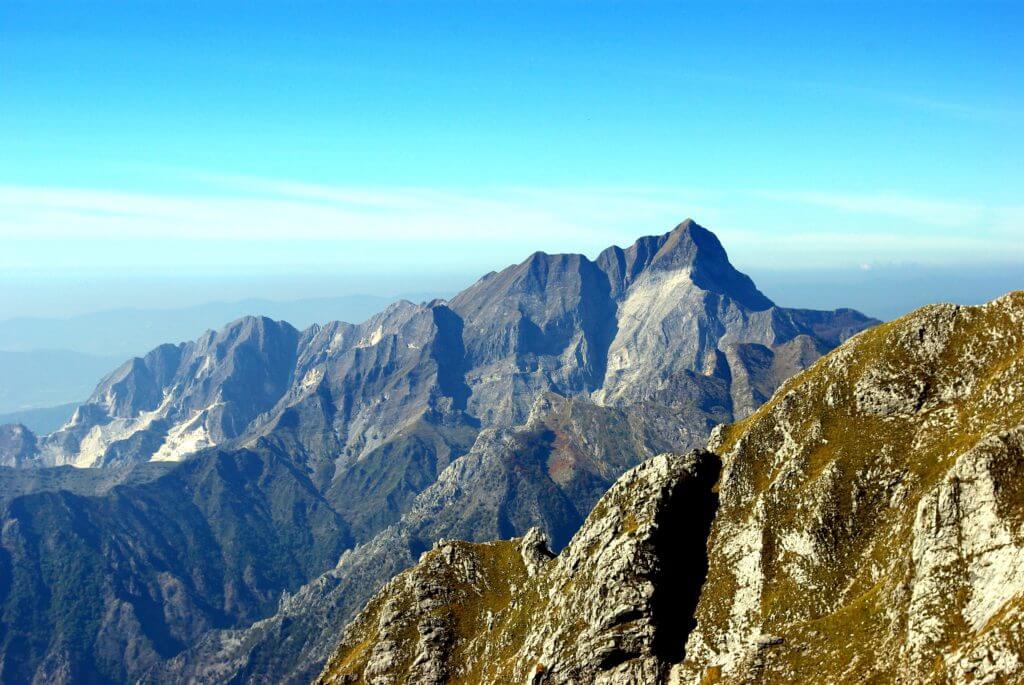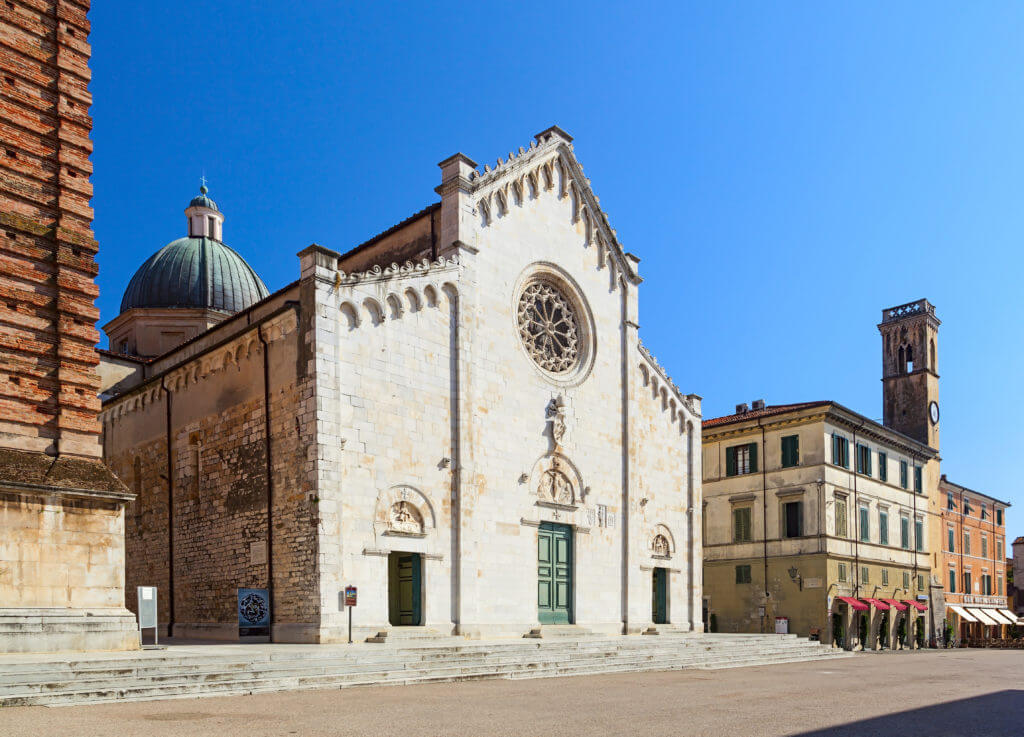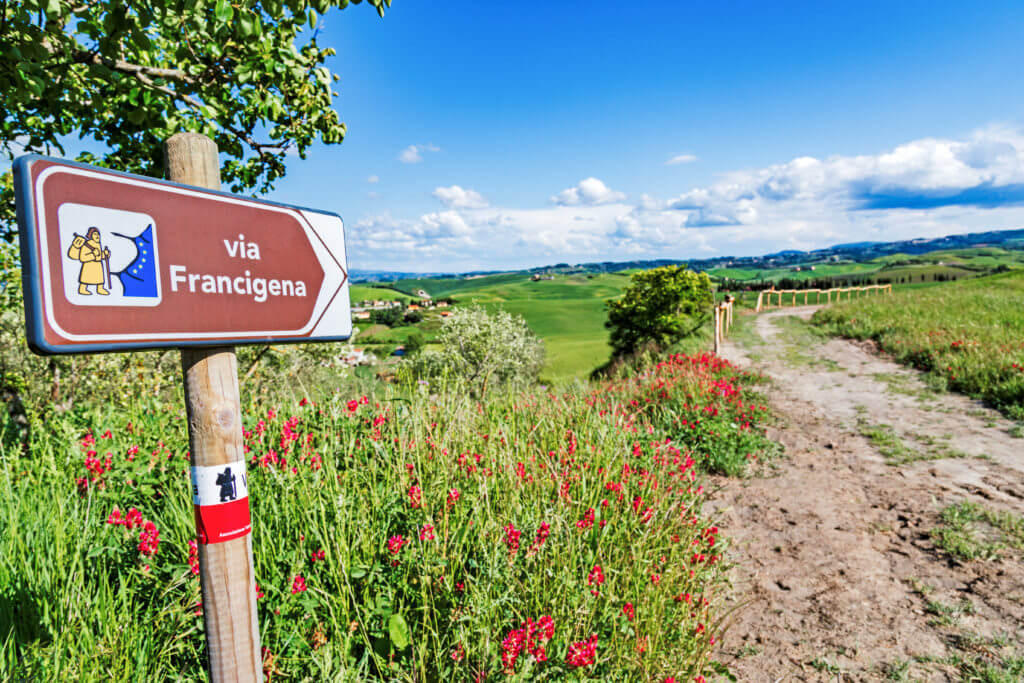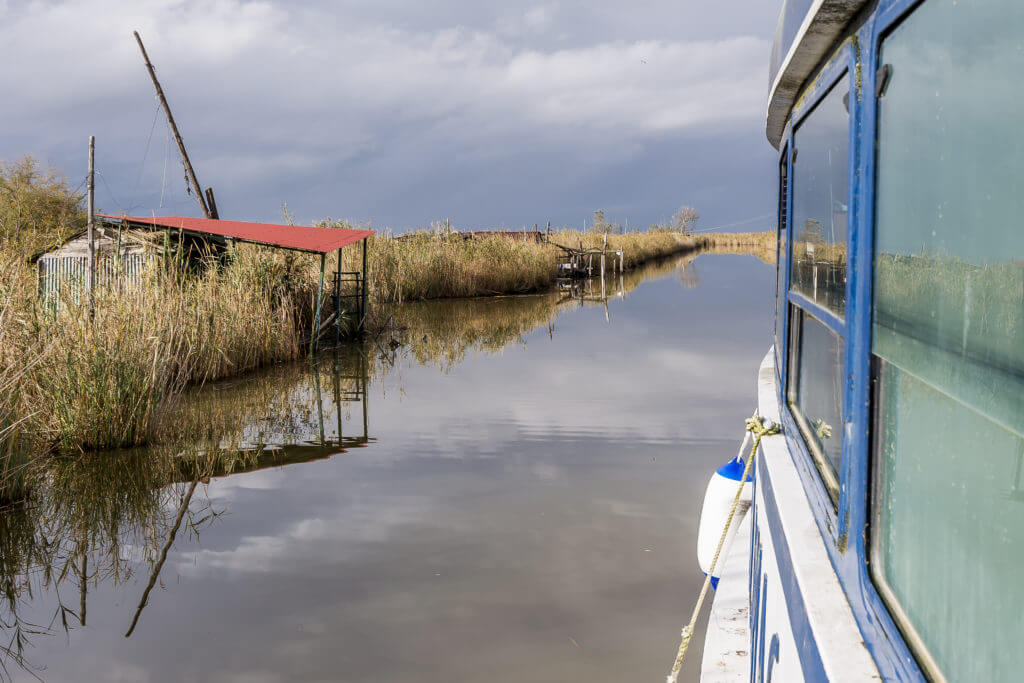Excursions from Forte
Excursions from Forte
Forte dei Marmi is the ideal starting point for many side trips, excursions to nearby sites of interest, and visits to Tuscany’s major cities: Lucca (25 km), Pisa (30 km), Florence (90 km), Siena (170 km). The Versilia exit of A12–E80 Genova–Rosignano superhighway is the perfect connection for traveling to and from Forte by car. Local and long-distance trains stop at the Forte dei Marmi-Seravezza-Querceta station in the Querceta locality of Seravezza.
The routes outlined below can be taken by car, by bike, or on foot. The distances vary from 4 to 15 kilometers. Before setting out on hikes or treks on the Apuan Alps mountain trails, we strongly recommend contacting the information office at the Pro Loco of Seravezza or at the Club Alpino Italiano (CAI) in Forte dei Marmi.
THE APUAN ALPS

From the center of Forte dei Marmi, Via Provinciale climbs toward the Apuan Alps, through Seravezza, located at the confluence of two impetuous rivers and noted for its Medici Palace, a UNESCO World Heritage Site and an exhibition venue par excellence. The road continues on to the villages that dot the Apuan slopes: visit Stazzema and its ancient baptismal church; the villages of Pruno, Volegno, and Cardoso with their breathtaking views; Levigliani and the Miniere di Argento Vivo mines and the Antro del Corchia cave system. And it keeps climbing, to the Cipollaio gallery and to Castelnuovo di Garfagnana. The mountainous terrain of the Apuan Alps offers innumerable trails for excursions, hiking, and trekking (suitable equipment is required for the mountain trekking trails); many of the routes lead to – or pass by – the rifugi scattered throughout the area, where you can stop for a rest and tasty refreshments.
PIETRASANTA AND THE MARVELS OF MARBLE

The Forte dei Marmi center is also the starting point for reaching the Pietrasanta’s coastal localities: first and foremost, Fiumetto and the La Versiliana park, an ancient pinewood, the setting for the beautiful Villa La Versiliana, where poet Gabriele D’Annunzio was wont to sojourn. Today, the villa and its park host theater performances and cultural encounters, artistic crafts trade fairs, flower shows, art exhibitions, and more. A wide, tree-lined boulevard runs to the Città Nobile of Pietrasanta. Visitors are invited to admire the cathedral square and its splendid bell tower; to explore the nature of the surrounding hills and the looming Rocca di Sala Lombard fortress; or to choose culture and the town’s many art galleries. Pietrasanta is renowned worldwide for its marble workshops and artistic foundries, where highly-specialized, expert local marble and bronze crafters work directly with the world’s great artists, who often take up residence in Pietrasanta for long periods.
ALONG THE VIA FRANCIGENA

As it winds from Lunigiana toward Lucca, the ancient Via Francigena passes through Pietrasanta and nearby Camaiore. This pilgrim’s route was that taken by Sigeric, Archbishop of Canterbury, when he travelled to Rome. Camaiore (the name derives from the Latin campus maior or “greater field”) displays such relicts of ancient Rome as the grid layout of the streets and the Gallic-Roman dialect still spoken by its oldest inhabitants. Dipping back toward the sea, you come the Lido di Camaiore locality and what, until 2000, was the site of the Bussoladomani international pop concert venue, now an extensive parkland.
VIAREGGIO, PUCCINI, AND LAKE MASSACIUCCOLI

Heading south on either the seaside road or the Via Aurelia will take you to Viareggio, the Versilia coast’s first tourist resort. Although it is still graced by Art Nouveau constructions along the seaside Passeggiata, today’s Viareggio is best known for its port, its luxury yacht-building industry, and its Carnival and the Cittadella workshops where the gigantic papier-mâché floats are built. A few kilometers further on, visit Torre del Lago Puccini and the open-air theater, the venue every summer for operas by Maestro Giacomo Puccini; and the villa-museum, likewise on Lake Massaciuccoli, where the Maestro spent a great deal of his time and where he composed several of his most famous operas. In Massarosa, on the opposite shore, rent a canoe to explore the lake, or explore its shore on foot along the boardwalks and hides, favorite haunts of birdwatchers, suspended over the water and along its edge. The hill above shelters the remains of a Roman-era villa, baths, and a mansio with mosaics.









